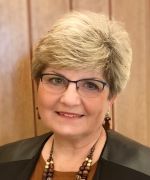

Gayle Lopez
Honey Bee Ridge
Greetings from the Board
This month’s article is written by Gayle Lopez, Vistoso Community Association (VCA) President
Last issue we introduced the Vistoso Community Association (VCA) budgeting process. The paragraphs that follow will provide greater insight on various categories of expenses that must be budgeted and defines some budget terminology.
The VCA 2023 annual budget must be completed and is scheduled to be approved by the Board of Directors (BOD) at the October 27, 2022 General Session. Historical expenditures by category from prior years, current budget, and projected year end financials are all considered. Committees that will need funds to complete work in 2023 also provide input. Committees consulted this year include: Governing Documents (e.g., working to update Covenants, Conditions and Restrictions (CC&Rs)), Communications (e.g., newsletters, website operation, etc.), Architecture & Landscape Committee (e.g., park maintenance, landscaping of common areas, etc.).
Another significant source of information for budgeting is the Reserve Study, which will be explained in more detail.
If expected expenses exceed income, the BOD either has to find ways to reduce expenses or approve a budget that includes an increase in assessment fees. Per our bylaws, the BOD must consider any surplus funds from the previous year in calculating the needed revenue before we consider increasing assessments.
Current residential assessment fees are $80/quarter. Non-residential (or commercial) members pay six times the residential assessment rate multiplied by the number of net acres. Our CC&Rs limit the BOD to increasing assessments to 5% per year. An increase higher than 5% requires a vote of 2/3 of all members to approve (CC&Rs page 51). There is a provision that allows taking an increase greater than 5% if the increase in Consumer Price Index warrants it.
An operating budget is an estimate of income and expenses for a one-year period. Income items for home owner associations (HOAs) include assessments, fees, fines, and interest on investments. By far the largest income source is assessments paid by members. Typical operating expenses incurred by an HOA are administrative fees, utilities, landscaping, and common areas maintenance. Administrative fees are costs associated with running the business of the VCA; like collecting assessments, legal fees, office rent, property management staff salaries, etc.
The top five expense categories for the VCA are landscaping, property management (FSR), water, electric, and legal. The VCA spends over $1,000,000 per year on the landscaping of over 100 acres of common area, 6 acres of grass, 10 family parks, a network of trails connecting the community and maintaining over 5000 trees, tens of thousands of shrubs, cacti, groundcovers, and native plantings.
In HOA budgets, the word “reserve” can best be correlated to the word “capital” used in other types of budgets. Reserve funds are used to pay for reserve projects that are outlined in the Reserve Study. In simple terms, a reserve fund is a savings account used to pay for big-ticket assets that age and need to be replaced over time. The Reserve Study identifies these big-ticket items and provides a timeline as to when they need to be replaced. There are certain guidelines that must be followed to qualify an asset for reserve funding.
The annual VCA capital or reserve budget incorporates just a small portion of the Reserve Study as the Reserve Study projects expenses out for 30 years.
Keeping with the 2022 focus on infrastructure, the VCA has spent or will be under contract to spend nearly $1,000,000 replacing aged reserve assets in 2022. Below are the top 5 expense items in the Reserve Study to be completed this year.
1. $170,000 Park Furniture
2. $111,000 Drainage Mitigation
3. $65,000 Shade Sails in Parks
4. $15,000 Street Light Demo Project
5. $12,000 Painting
Now with your new found knowledge on HOA budgeting, test yourself by answering the questions in the “Did You Know?” section of this newsletter.
